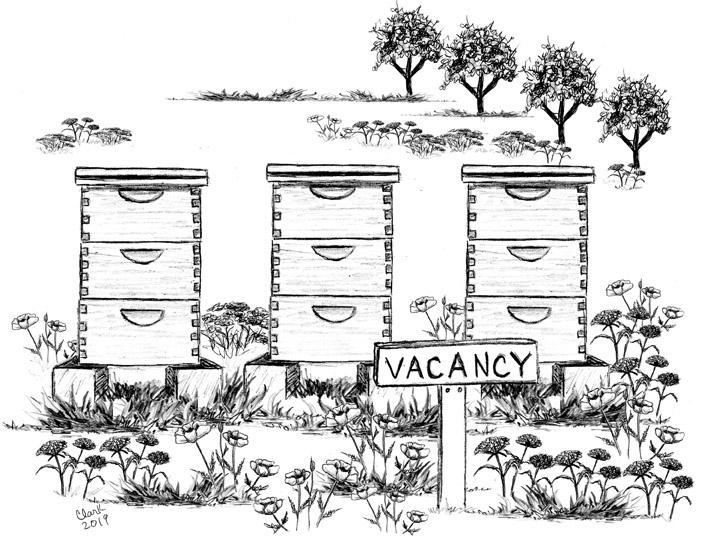
Dear Bird Folks,
I recently received a letter in the mail warning me about neonicotinoid pesticides. It claims a single kernel of corn coated with neonicotinoid can kill a songbird. Is this true? Should I buy organic birdseed instead? Does that even exist? I enjoy feeding birds, but I don’t want to do them any harm.
– Nate, Eastham, MA
Oh, brother, Nate,
It’s spring and daylight savings time is back. Do we really have to talk about such a dark subject? Can’t we save this for a more sinister time of year, such as Halloween or stupid Black Friday? Although it is tax season, so I guess one more ominous topic won’t put us over the edge. Come to think of it, chatting about toxic chemicals might be a nice break from dealing with all the tax forms. I feel better already.
Back in simpler times, farmers typically applied pesticides to their crops by spraying them from a tractor or a plane. At home, we would carefully wash our fruits and veggies under cold water in order to remove any noxious residue. The one exception to this rule is apples. Somehow, an apple can be made totally sanitary by briefly rubbing it on your sleeve. I’m not sure why that works, it just does. In the early 1990s Bayer, the anti-headache people, came up with a new idea. Instead of coating the outside of a plant with poison, they made the entire plant poisonous. New forms of pesticides, called neonicotinoids (aka, neonics), were designed to be absorbed into plants as they grew. This made every part of the plant resistant to insect attacks. Washing was no longer needed to remove the noxious residue because the noxious residue was now permanently inside our fruits and veggies. Eek!
This all sounds bad, but that wasn’t the goal when they developed neonics. Chemical companies were trying to improve upon old pesticides, which also had serious issues. Having the toxins “safely” inside the plant meant crops had to be sprayed far less often, saving farmers money, which resulted in lower prices for consumers. Cheaper vegetables are great, but who wants them if they’re filled with poison? Well, neonics are not considered to be a people poison (at least not now). They are toxic to insects, yet are relatively safe for mammals. How is that possible, you ask? It’s because dissimilar species process things differently. For example, humans love chocolate, but it can be deadly for dogs. Conversely, dogs can eat rotten garbage, but we can’t. (Dogs sure get the short end of that exchange.)
If neonics only bother bugs, where’s the problem? I know it’s hard to believe, but not all bugs are bad and some are darn right critical to our existence. For centuries honeybees and bumblebees have been quietly pollinating our plants, but now plant pollen and nectar have become laced with neonics. In low doses the pesticide doesn’t necessarily kill the bees, but it does mess them up. Some bees have become sterile or are getting lost on their way back to the hive. And because neonics are not water soluble, runoff spreads the toxin away from the target plants and into nearby wildflowers. The worldwide phenomenon, known as bee “colony collapse,” has been routinely blamed on neonics. It’s tough to be a bee right now.
To be sure, there is much debate on this topic. As you may expect, those in the industry claim their products are safe, especially when used properly. Environmental groups, on the other hand, are painting a bleaker picture and insist something needs to be done, and soon. The European Union has already started banning the use of certain neonics. Unfortunately, the EPA has been slow in following Europe’s lead, but in 2014 the U.S. Fish and Wildlife Service banned the controversial pesticides from our National Wildlife Refuges. That was good, but then there was the 2016 election…and, well, you know. The environment quickly took a backseat to big business and the ban was lifted. Sigh!
Neonics can be sprayed or mixed into the soil, but more commonly they’re coated onto the seeds before being planted. You asked if eating a single kernel of treated corn could kill a songbird. Some sources claim that this is true, but the birds aren’t fed treated seeds. (Although they may consume seeds spilled during the planting process.) The biggest threat to birds isn’t ingesting stray kernels of corn; it’s the loss of insects. Swallows, martins, swifts and a huge list of other insect-eating birds are disappearing from areas where neonics are used. And this isn’t a wildlife-only problem. This pesticide has found its way into our food as well. In 2015 the American Bird Conservancy and the Harvard School of Public Health took food samples from, of all places, the cafeteria of the U.S. Congress. The study revealed that over 90% of the food in Congress’s cafeteria contained at least one form and often two forms of neonics. That’s right, our congressional representatives are ingesting dubious chemicals…which may explain a lot.
At this point, there isn’t much we can do about neonics, Nate, except pressure the EPA to finally do its job. What about going organic? That’s always a good idea when buying your own food, but it’s not very practical for birdseed. Organic sunflower seed sells for about $4.00 for a single pound. Ouch! If I’m going to spend that much money on something, it’s not going to be birdseed. It will be chocolate. I like birds and everything, but not if they cut into my chocolate budget. Let’s be real.